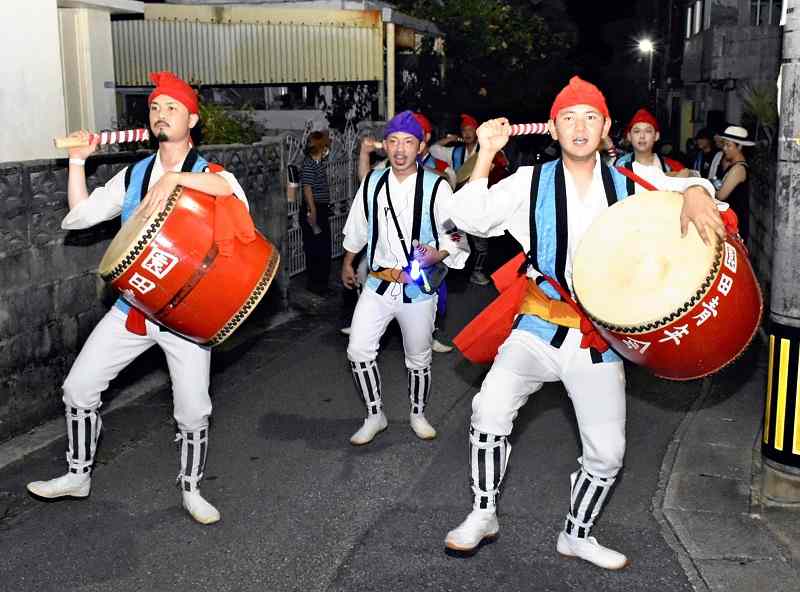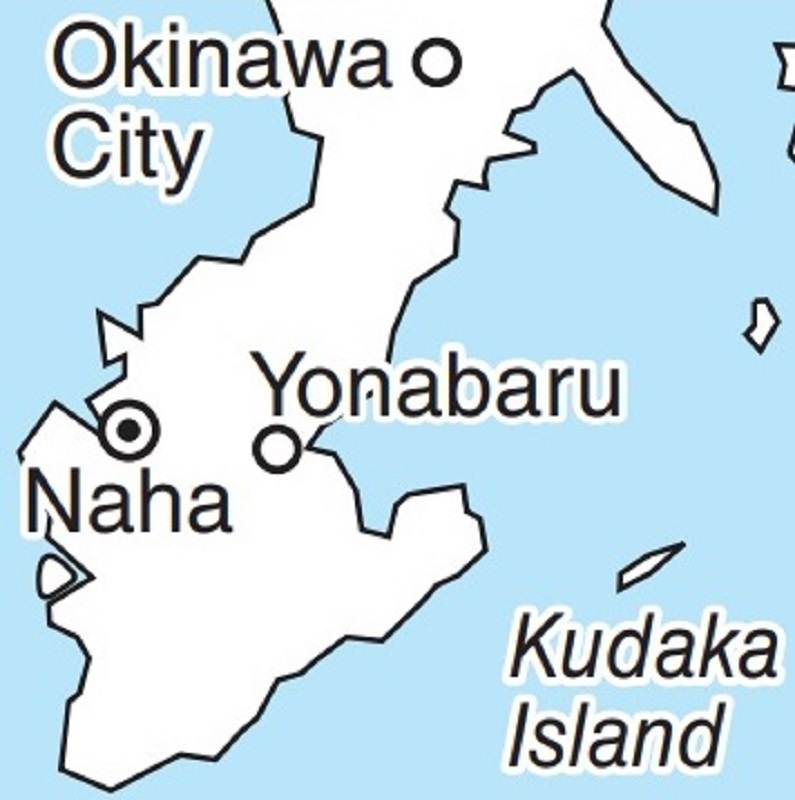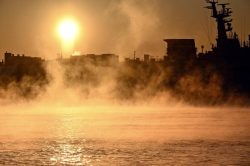
Young people parade through the streets during an Eisa performance in Okinawa City’s Sonda district on Aug. 12.
16:16 JST, September 30, 2022
OKINAWA— Among traditional rituals in Okinawa Prefecture, at least one ritual is flourishing. Eisa, Okinawa’s representative group performance, is now widely established as a performing art for young people.
On the evening of Aug. 12, about 70 people from a youth association in matching costumes paraded through a residential area in Okinawa City while beating drums, playing sanshin — Okinawan stringed instruments — singing and shouting “eisa, eisa, hiyaruga eisa.” Residents, who had been eagerly awaiting the troupe, danced and whistled along.

“It’s an important cultural event that brings the community together,” said the 24-year-old leader of the youth group.
Originally, Eisa was a dance performed during ancestor memorial services, but it has undergone major changes after World War II.
A predecessor of the current All-Island Eisa Festival was an Eisa contest that began in Koza, now Okinawa City, in 1956 during the U.S. occupation. The city government’s goal was to promote the local community in response to the economic damage suffered from restrictions that prohibited U.S. military personnel and related people from entering the civilian area of Okinawan people.
The competition brought about a change in the tradition, which originally was a simple ring dance, turning it into performance art with an emphasis on orderliness, beauty and complex formations.
After control of Okinawa was returned to Japan, Eisa performances began to be held at various events aside from the mid-August Bon Festival, and they spread from Okinawa Island to other parts of the prefecture and even outside the prefecture.
Further innovation has led to creative Eisa performances that emphasize entertainment value, as participants swing taiko drums and jump acrobatically.
“Eisa has a free spirit and, because of its flexibility, has changed with the times and attracted many people,” said Shin Kumada, a professor at the Okinawa Prefectural University of the Arts. “It also has the potential to become a world-class cultural tradition in the future.”
■Related story below, please check:
https://japannews.yomiuri.co.jp/features/travel-spots/20220910-57255/
Related Tags
"Features" POPULAR ARTICLE
-

Sanrio to Open Museum in Yamanashi Pref. Dedicated to Founder, Exhibits Include Hello Kitty, Other Characters
-

Autumn Foliage Surrounds Visitors to Tokyo’s Showa Kinen Park
-

My Daughter No Longer Speaks to Me, But I Want to See Her and My Grandchild
-

Kumamoto: Public Bath Refurbished as Library Where You Can Chat, Take Photos
-

Frozen Vegetables: Demand Rises for Convenient, Tasty Domestic Produce
JN ACCESS RANKING
-

Tokyo Economic Security Forum to Hold Inaugural Meeting Amid Tense Global Environment
-

Keidanren Chairman Yoshinobu Tsutsui Visits Kashiwazaki-Kariwa Nuclear Power Plant; Inspects New Emergency Safety System
-

Imports of Rare Earths from China Facing Delays, May Be Caused by Deterioration of Japan-China Relations
-

University of Tokyo Professor Discusses Japanese Economic Security in Interview Ahead of Forum
-

Japan Pulls out of Vietnam Nuclear Project, Complicating Hanoi’s Power Plans

























